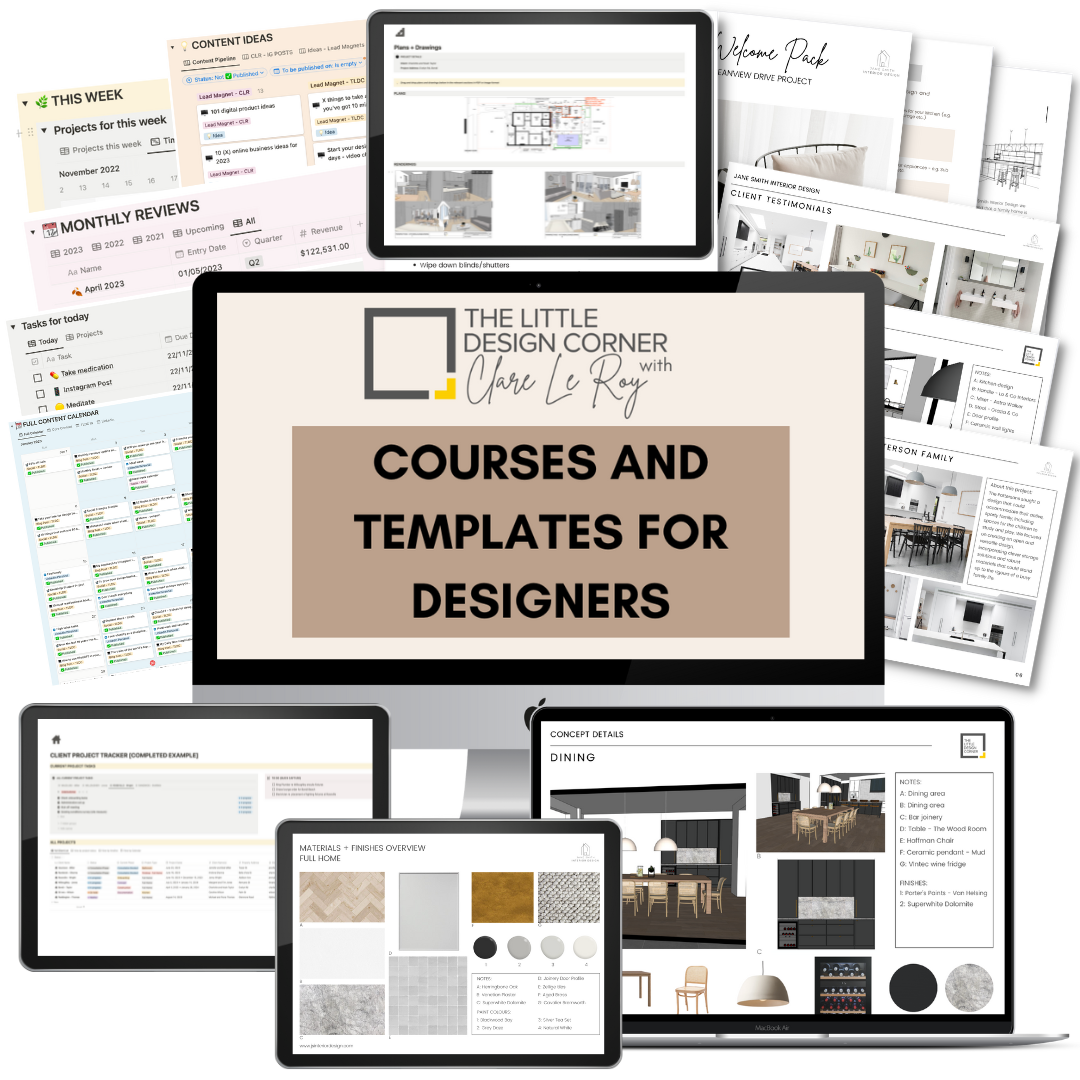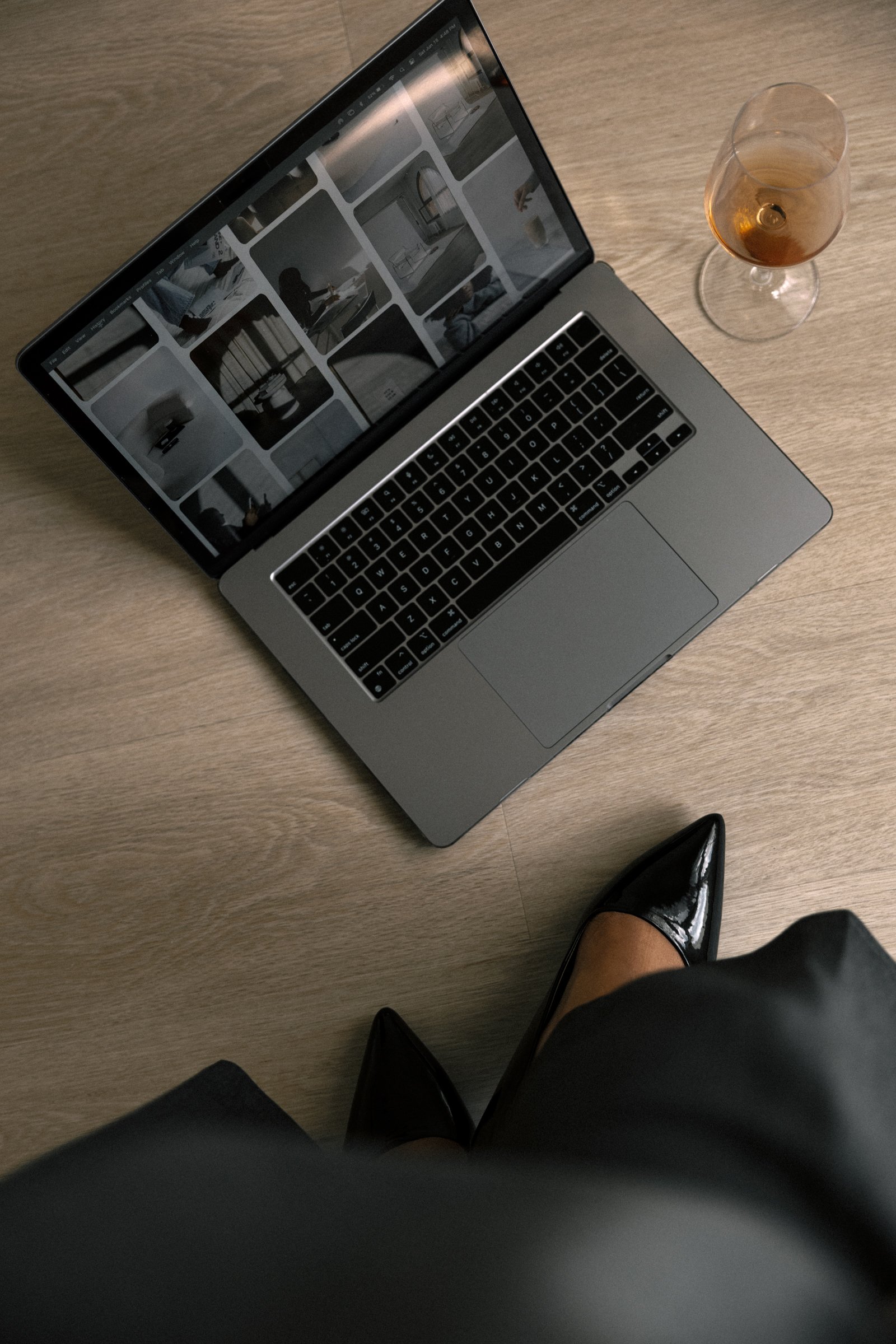How to build a future ready interior design business in an evolving industry
The interior design industry is changing fast - AI, sustainability, shifting client expectations and new business models are redefining how designers work.
If you’re not adapting, you’re already behind.
The future belongs to designers who don’t put their head in the sand about this stuff and can blend creativity with smart business strategy to position themselves as leaders in the industry.
This post is about how to build a design business that doesn’t just survive industry shifts but thrives because of them.
1. Mastering AI and technology
Technology isn’t here to replace designers - it’s here to make the best designers even better and to speed up their workflow. The ones who embrace AI and automation will have a huge competitive advantage over those who ignore it.
AI for design and business growth
AI tools like MidJourney, DALL-E and ChatGPT can generate design concepts, mood boards and content in seconds - cutting down time spent on repetitive tasks.
Here’s how to use AI in your design business:
Concept Development: Generate mood boards, concept images or colour palettes
Client Communication: Automate emails, proposals or FAQs using ChatGPT.
Strategy: Use chat tools (e.g. ChatGPT/Claude) as a strategic thinking partner for business strategy and ideas
Marketing and content creation: Use AI to draft blog posts, video scripts, social media posts and ad copy.
TIP: Never copy any AI output word for word - use it as a place to brainstorm ideas, then make it your own. Otherwise you just sound like every other designer who is just copying and pasting AI at the moment!
AR and VR
Most clients struggle to visualise spaces from 2D drawings. Tools like SketchUp, Revit and Enscape have helped bridge the gap for clients for many years now so designers can present their ideas in 3D.
But the next level of this, which many designers are already starting to use, is AR and VR.
What’s the difference between AR and VR?
AR (Augmented Reality) overlays digital elements onto the real world - e.g. placing a 3D furniture piece in a real room using your phone.
VR (Virtual Reality) creates a fully immersive environment - e.g. a client being able to “walk through” their new home before it’s built while wearing a VR headset
How to implement AR/VR in your business:
Research and educate yourself on the latest developments, apps and tools in AR/VR
Create interactive virtual tours so clients can experience the design before it's built
Use AR apps to let clients see furniture and finishes in their existing spaces
Smart home integration
With smart homes becoming the norm, designers who understand smart lighting and automation systems will have an edge - especially in high-end markets.
It will be hard to stay on top of this area, as it’s a very specialised skill, so the best way to future proof your business here is to develop strong partnerships with local suppliers who are experts in this field. You can then bring these suppliers into your projects and provide a seamless service and experience for your clients. You then benefit from the expertise and experience of your partner suppliers.
Remember that home integration is something you will want to start integrating at conceptual phase as a lot of it requires specific wiring and preparation that can’t easily be done later in a project.
What to focus on:
Finding the best local suppliers who are experts in smart home integration and automation
Designing with future proofing in mind (e.g. spaces that can integrate evolving smart tech)
Educating yourself about the ROI and energy efficiency benefits of smart design so you can then educate your clients (which helps with buy-in and approvals)
2. Sustainability (the new standard, not just a trend)
Sustainability isn’t an add on anymore. High-end clients and commercial projects are demanding circular design and low-carbon materials.
How to make sustainability a profitable differentiator
Educate yourself about circular design principles as well as recyclable/renewable materials and take back programs
Use tools like Sefaira to measure and reduce a project’s carbon footprint
Get Certified - e.g. B Corp, LEED, WELL and Passive House certifications boost credibility and attract high-value clients who value sustainability
3. Designing for evolving client needs
The way people live and use spaces is changing and the designers who anticipate these shifts will stay ahead.
Hybrid work and multi-functional spaces
With remote work now permanent for many, home offices and multi-use spaces are in high demand.
How to think about this:
Become an expert in home office design and multi-functional design
Offer specific solutions for clients looking to optimise their homes for both work and life
Biophilic and sensory design for wellbeing
People want homes and workplaces that reduce stress, boost productivity and feel good to be in.
Key elements to incorporate and educate yourself about:
The principles of biophilic design
Natural materials, lighting (both natural and artificial) and ventilation
Soundproofing and acoustic design
Aging-in-place and accessible design
With an aging population, more clients want homes that adapt to their needs over time.
How to integrate accessibility:
Educate yourself on how to create spaces that are easy to navigate for all ages and levels of ability
Design beautiful, high-end accessible features (wide doorways, larger bathrooms, voice activated controls, seamless thresholds, lifts)
Know the laws and regulations around accessible design so your designs are always compliant
4. Business and brand positioning for the future
Even the most talented designers won’t get ahead if they don’t know how to market themselves and scale their businesses.
Building a future proof brand
Clients don’t just hire designers - they hire experts who they trust. A strong personal brand makes you the go-to designer in your niche.
How to stand out:
Own a niche - whether it’s sustainable interiors, AI driven design or spaces for clients who want to age-in-place - become known for something specific
Create valuable content - share your expert opinions to build authority on Instagram, LinkedIn and YouTube
Show social proof - case studies, testimonials and past project breakdowns show potential clients that you know what you’re doing and have done it before
Scaling your business beyond 1:1 client work
The smartest designers are diversifying their income so they’re not solely dependent on projects.
Scalable business models for designers:
Digital products - e.g. templates that generate passive income
Online courses or workshops
Subscription based services or memberships
Where to Start?
You don’t have to overhaul your entire business overnight. Here are a few things you could start with:
✅ Learn an AI tool and test it in your workflow
✅ Experiment with AR/VR for client presentations
✅ Research your local sustainability certifications and decide if you would like to become certified
✅ Rethink your niche - is it future focused?
✅ Brainstorm how to add a digital product or scalable revenue stream to your business (hint: AI is a great brainstorm partner for this one)
The future of interior design belongs to those who embrace change and are constantly evolving with our ever changing industry.
Thanks for reading and catch you in my next post :)
Clare x
Dr Clare Le Roy
Courses and Templates for Designers and Architects
DO YOU WANT TO….
Find more clients?
Bring in more revenue?
Create better systems and processes?
Then check out my business courses and templates for designers and architects.
These courses and templates leave you with work done - not just a long list of things you need to do next. We have a really strong focus on taking action and getting things created that improve your business.








